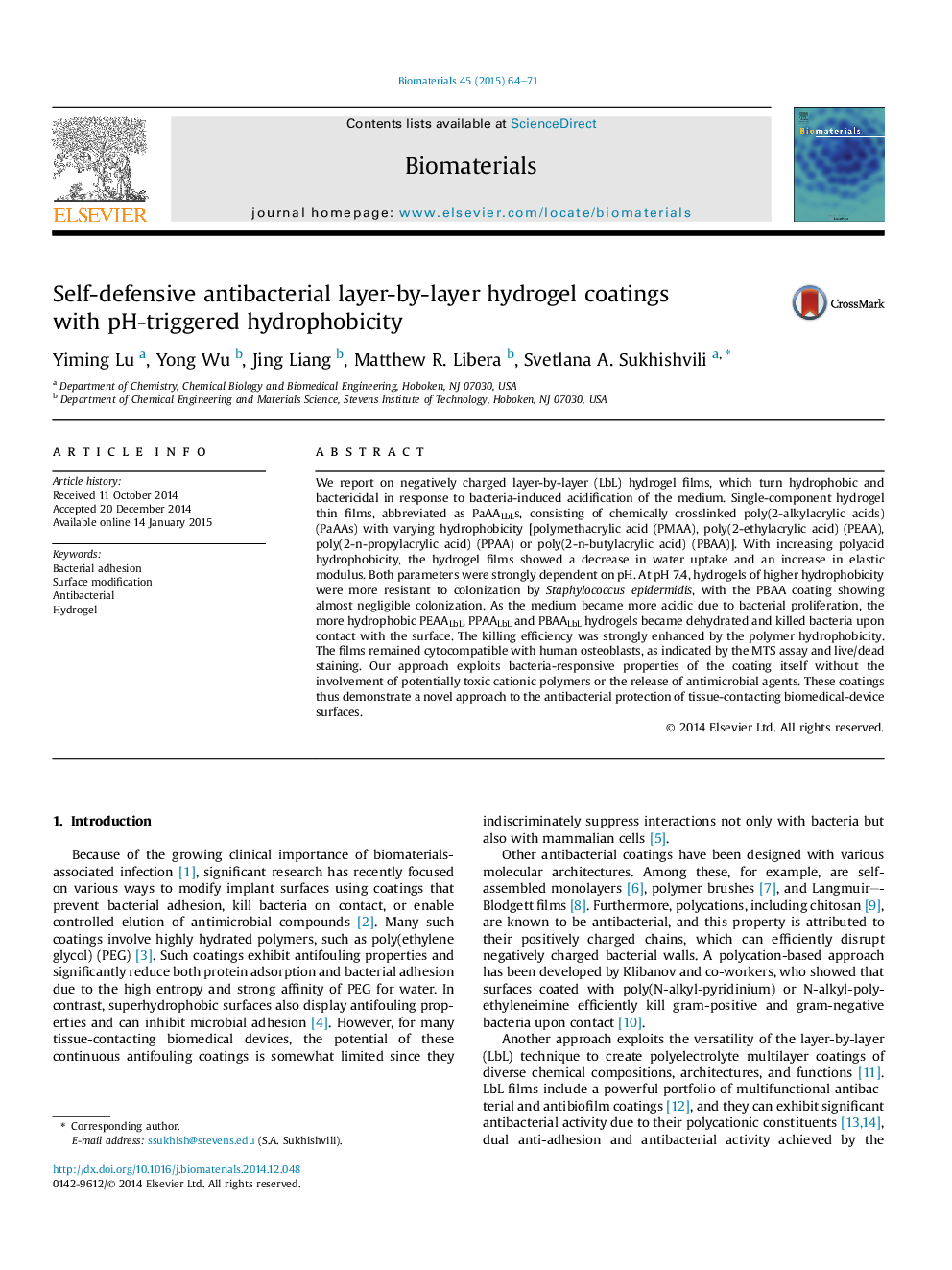| Article ID | Journal | Published Year | Pages | File Type |
|---|---|---|---|---|
| 5736 | Biomaterials | 2015 | 8 Pages |
We report on negatively charged layer-by-layer (LbL) hydrogel films, which turn hydrophobic and bactericidal in response to bacteria-induced acidification of the medium. Single-component hydrogel thin films, abbreviated as PaAALbLs, consisting of chemically crosslinked poly(2-alkylacrylic acids) (PaAAs) with varying hydrophobicity [polymethacrylic acid (PMAA), poly(2-ethylacrylic acid) (PEAA), poly(2-n-propylacrylic acid) (PPAA) or poly(2-n-butylacrylic acid) (PBAA)]. With increasing polyacid hydrophobicity, the hydrogel films showed a decrease in water uptake and an increase in elastic modulus. Both parameters were strongly dependent on pH. At pH 7.4, hydrogels of higher hydrophobicity were more resistant to colonization by Staphylococcus epidermidis, with the PBAA coating showing almost negligible colonization. As the medium became more acidic due to bacterial proliferation, the more hydrophobic PEAALbL, PPAALbL and PBAALbL hydrogels became dehydrated and killed bacteria upon contact with the surface. The killing efficiency was strongly enhanced by the polymer hydrophobicity. The films remained cytocompatible with human osteoblasts, as indicated by the MTS assay and live/dead staining. Our approach exploits bacteria-responsive properties of the coating itself without the involvement of potentially toxic cationic polymers or the release of antimicrobial agents. These coatings thus demonstrate a novel approach to the antibacterial protection of tissue-contacting biomedical-device surfaces.
